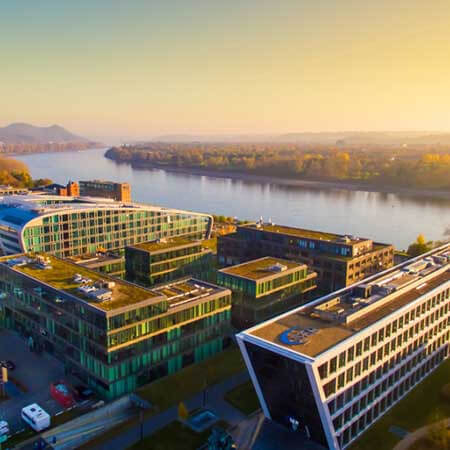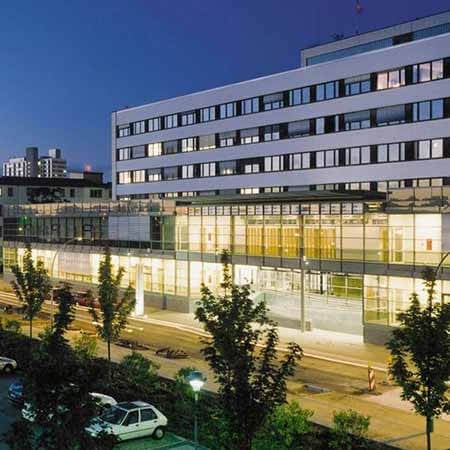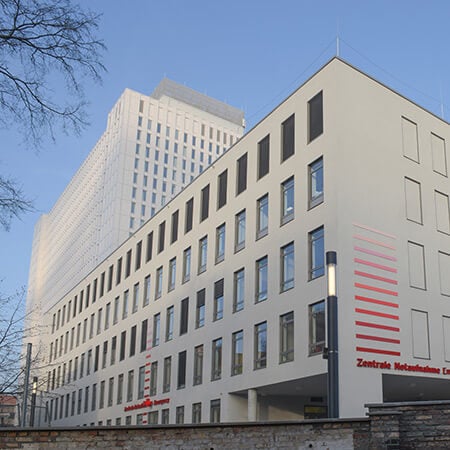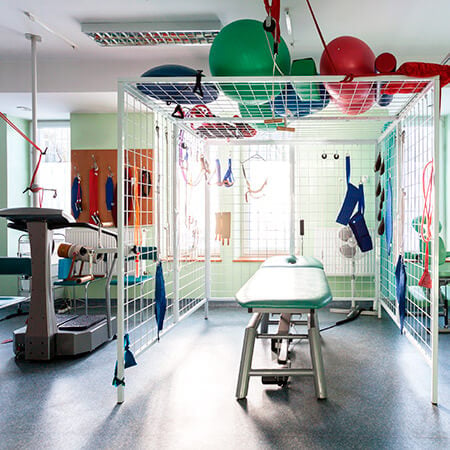Stroke
Due to the difficulties associated with the organization of treatment in Turkey, Switzerland, South Korea and India, we are not currently processing requests to these regions.
If you are interested in treatment in Germany, please leave a request and our specialists will contact you as soon as possible.
Stroke is a pathological impairment of the cerebral blood circulation which is manifested by the death of the brain region.The ischemic stroke (caused by blood clot) is diagnosed in 85% of all cases. 15% of patients experience hemorrhagic stroke (cerebral hemorrhage). Stroke is one of the most common causes of death in the modern world (10-30% in different countries).
The Booking Health portal presents 55 German clinics specializing in stroke treatment
Show all clinics
Diagnostics of Stroke
Ischemic stroke is diagnosed when there is a sudden impairment of cerebral blood flow accompanied by neurological symptoms which last for 24 hours or more (if the death doesn’t occur earlier).
If neurologic symptoms regress within 24 hours, the diagnosis will be different, namely, a transient ischemic attack.
Specialist applies a number of different instrumental diagnostics methods to differentiate stroke from other brain pathologies:
- Computed tomography
- MRI
These visualization techniques also help to differentiate between ischemic and hemorrhagic strokes. If CT and MRI are unavailable, then lumbar puncture is performed to distinguish diseases.
Blood in the cerebrospinal fluid is characteristic for the hemorrhagic stroke while it is absent in case of ischemic stroke. Lumbar puncture is contraindicated if a patient is in the severe condition since it can cause brain dislocation with fatal outcome.
Treatment of Stroke
The first 3 hours after the ischemic stroke are called “therapeutic window”. During this time it is possible to inject the systemic thrombolytic medicines, dissolve thrombus and restore cerebral blood flow. In case of success, the death of brain regions doesn’t occur.
Most patients with stroke should be hospitalized. The main aims of treatment are:
- Maintenance of vital activity in the acute period
- Prevention and elimination of infectious complications
- Neuroprotective therapy (to limit areas of brain necrosis)
Surgical treatment in patients with the ischemic stroke is indicated in case of intracranial pressure increasing. It allows to improve cerebral blood flow and reduces the risk of death more than twice.
Surgical treatment in patients with the hemorrhagic stroke can be directed at:
- Removal of intracerebral hematoma
- Ventricular drainage to eliminate hydrocephalus
- Prevention of recurrent stroke (resection of an aneurysm or arteriovenous malformation)
In German hospitals it is possible to remove hematomas using stereotactic surgery. Such operations are performed without trepanation of the skull and therefore are less traumatic.
Best clinics for the stroke treatment in Germany:

Beta Clinic Bonn

Bundeswehr Hospital Berlin

Charite University Hospital Berlin
Rehabilitation after stroke
During the treatment in Germany, all the patients necessarily receive recommendations for rehabilitation. Otherwise, they can undergo the rehabilitation in a specialized German clinic. During recovery after a stroke the healthy areas of the brain take on the functions of damaged neurons. Rehabilitation therapy facilitates this process and makes it more rapid.
The directions of the rehabilitation
There are several main directions of the rehabilitation such as:
- Medical one, which includes the restoration of patient's health, normalization of body functions, stimulation of compensatory possibilities, elimination of the chronic pain, etc.
- Physical one, which is responsible for improving of work capacity and tolerance for physical activities. In the complex cases, the purpose of this therapeutic rehabilitation area may be the restoration of the self-service ability.
- Psychological one, which helps to eliminate the mental disorders which may occur as a result of a disease (phobias, depression, apathy), to increase the human motivation, and to adapt to the changed living conditions.
The World Health Organization underlines 3 phases of rehabilitation such as: hospital phase, a phase of recovery and supporting phase. Different tasks are solved in different phases. The hospital phase is conducted immediately after the treatment. After the first phase begins the second one which usually takes place in sanatoriums or rehabilitation centers. This is the boundary between two periods, namely illness and future life. Then a supporting phase is required. The patient maintains the achieved level of his health and physical activity at home or visits the rehabilitation center from time to time.
Rehabilitation methods
The most modern rehabilitation programs are used in Germany. They are adapted individually for each patient, and are based on the recent disease, age, physical possibilities, and the results of treatment. Different specialists such as: therapists, psychologists, rehabilitators, kinesiotherapists, physiotherapists are involved in the rehabilitation process.
The following methods of rehabilitation are used:
- Dosed physical activity
- Training on the simulators and in the pool
- Physiotherapy
- Acupuncture
- Manual therapy
- Microcurrent therapy
- Compression therapy
- Lymphatic drainage
- Natural factors of the nature (mud, thermal waters, etc.)
Rehabilitation may include medicamentous support. Also, it is necessary to hold a consultation with the patient about the proper nutrition and the way of life which is important for him in the current situation.
Rehabilitation programs in Germany are designed for 2 weeks. If necessary, they can last much longer. In this country, the patient is provided with qualitative care, accommodation in comfortable rooms and individually selected meals.
Rehabilitation programs in Germany show one of the best results in the world. Most patients successfully restore their employability and excellent health there. They remain physically active, return to the full social and family life.
Best clinics for neurological rehabilitation in Germany:
Author:
The article was edited by medical expert, board certified Dr. Nadezhda Ivanisova. For the treatment of the conditions referred to in the article you must consult a doctor; the information in the article is not intended for self-medication!
Sources:
European Federation of Neurological Associations: EFNA
Journal of Neurology, Neurosurgery and Psychiatry
The cost of services includes
Here you can find the cost of treatment for this disease at the German University Hospitals. Leave a request and we will provide a free consultation with a doctor and will start organizing the whole treatment process.
The program includes the following:
- Issuing of an invitation for getting a visa for treatment as quick as possible
- Fixing an appointment at a time convenient for you
- Preliminary organization of a comprehensive examination and discussion of the forthcoming treatment plan
- Arranging transfer from the airport to the hospital and back to the airport
- Provision of interpreting services and services of a personal medical coordinator
- If necessary, assistance in the organization of further surgical treatment
- Provision of a medical insurance against treatment complications covering up to 200,000 euro
- Preparation and translation of medical records and recommendations from the hospital
- Assistance in the subsequent communication with your attending physician, including consultations on repeated X-ray images through the unique medical document management system E-doc


